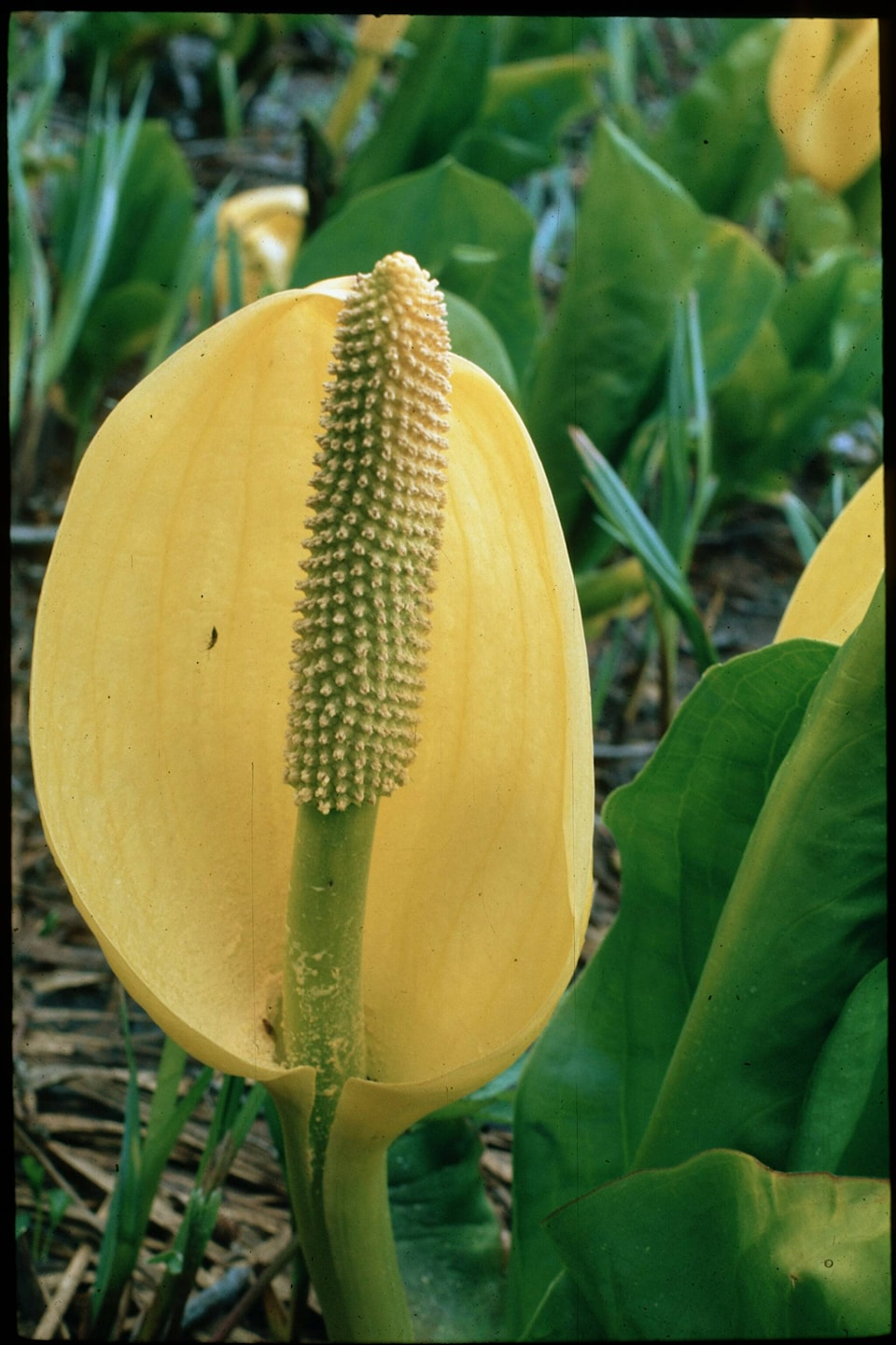One of my favourite signs of spring is the appearance of the bright yellow flowering parts of the skunk cabbage or swamp lantern. Growing in wet places such as swamps and seepage sites, the bright yellow flowering structures appear like lanterns brightening up their drab surroundings before the bright green leaves start to grow.
The flowers are very tiny and are born on a phallus-like cylindrical structure called the spadix that starts out green but turns yellowish as the flowers mature. The tiny male flowers come out first near the top of the spadix followed by the female flowers situated lower down. The spadix is partly surrounded by a big, bright ‘chrome-yellow’ cloak-like bract called a spathe.
The spadix and flowers give off a somewhat skunky odour that attracts rove beetles looking for the possibility of some smelly food, but also hoping to find a mate. As the beetles wander around the spadix having an orgy, they walk all over the flowers – first picking up pollen from the male flowers and then leaving some of it on the female flowers. So, the swamp lantern flowers get pollinated and produce bright green berries, while the beetles have sex to make more beetles.
A similar species – the eastern skunk cabbage is known to generate its own heat, which helps to prevent the reproductive structures from freezing as well as ‘disperse’ the smell over a wider area. I can’t help thinking that the spathe of our western skunk cabbage must have a similar function by acting like a parabolic reflector, absorbing the sun’s heat, and re-directing it onto the spadix producing the smell.
The shiny bright green leaves can be over a metre long on good growing sites and may be browsed by deer. As black bears emerge from hibernation, they search out and eat the thick fleshy roots as a laxative or cathartic. Grizzlies in the Kutzemateen also eat the roots in the fall.
Traditionally, the large leaves were used by Indigenous people as medicine for burns, as well as to wrap food, or as plates to layer food in cooking pits. The leaves and roots would be heated and eaten only as an emergency food. All parts of the plant contain crystals of calcium oxalate that can irritate the digestive system and may result in death if consumed in large amounts.
